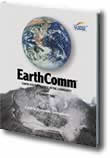This investigation will help you to:
- Visit the Virtual Earthquake web site and simulate a new earthquake.
- Does your community experience frequent earthquakes? Maybe you would like to help seismologists when an earthquake happens in your community. The Earthquake Felt Report Form allows you to contribute your intensity observations directly to seismologists so that they can construct isoseismal maps. Visit the following web sites to find the address that will let you know the kinds of observations you need to detect and record.
Description of the scale currently used in the US. Includes a good explanation of the difference between intensity and magnitude.
Includes an earthquake intensity location map of North America. Allows searches for specific earthquakes by city and state, so you can look up the intensity of earthquakes that have shaken your community. - Write down other questions you have about the ways earthquakes are measured. How would you go about gathering information to answer these questions? Write your ideas in your notebook. Visit the following websites for suggestions of useful content to explore:
USGS - Earthquake and seismology learning resources
IRIS - Searchable database featuring animations and videos on topics in seismology
"Seismometers, Seismographs, and Seismograms" - USGS Cascades Volcano Observatory
Description of the Global Seismic Network (GSN) and how it is used to study earthquakes around the world.
Monitoring Earthquakes Around the World - USGS Fact Sheet 146-97
"How are Earthquakes Studied?" - UPSeis from Michigan Technological University
Includes a photograph and description of the first device used to detect earthquakes and an illustration showing how seismograms are generated.
"How Do I Read a Seismogram" - UPSeis from Michigan Technological University
Includes images to help you to learn to read seismograms.
"Seismometers, Seismographs, and Seismograms" - USGS Cascades Volcano Observatory

